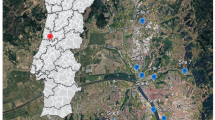Abstract
Using GPS technology and community research methods for plant communities, we investigated the distribution patterns of aquatic plant communities in the high plateaus of the Napahai Wetlands, Yunnan, China, as well as the species changes of plant communities compared with that of 24 years ago since 2005. We found that the types and numbers of aquatic plant communities have changed. Some pollution-tolerant, nutrient-loving plant communities such as Scirpus tabernaemontani, Zizania caduciflora, Myriophyllum spicatum, and Azolla imbricata flourished, while the primary aquatic plant communities were reduced or even disappeared. The number of aquatic plant communities were increased from nine to 12 with the addition of two new emergent plant communities and one new floating-leaved plant community. The increase in emergent plant communities was significant. From east to west and from south to north, various types of plant communities were continuously distributed, including floating-leaved plant communities, emergent plant communities and submerged plant communities. The composition of the communities became more complicated and the number of accompanying species increased, while the percentage ratio of dominant plant species declined. In 2005, the coverage of emergent plant communities was the largest (528.42 hm2) followed by submerged plant communities (362.50 hm2) and the floating-leaf plant communities was the smallest (70.23 hm2). The variations in the distribution of aquatic plant communities in the Napahai Wetlands reflect the natural responses to the change of the wetland ecological environment. This study indicates that human disturbances have led to an inward movement of the wetland shoreline, a decrease in water quality and a reduction in wetland habitat.
Similar content being viewed by others
References
Chen H D (1980). Structure and dynamics of aquatic vascular plant communities in Wuchang eastern lake. Oceanologia et Limnologia Sinica, 11(3): 275–284 (in Chinese)
Department of Wildlife Conservation, State Forestry Administration, P R China (2001). Management and Research of Wetlands. Beijing: China Forestry Press, 105–115, 166–186 (in Chinese)
Hellquist C B (1972). Range extension of vascular plants in New England. Rhodora, 74: 131–141
Kimbel J C (1982). Factors influencing potential intralak ecolonization by Myriophyllum spicatum L. Aquatic Botany, 14: 295–307
Kunii H et, Maeda K (1980) Maeda. Seasonal and long-term changes in surface cover of aquatic plants in a shallow pond, Ojaga-ike, Chiba, Japan. Hydrobiogia, 87: 45–55
Li H (1987). The lake vegetation of Hengduan mountains. Acta Botanica Yunnanica, 9(3): 257–270 (in Chinese)
Lü X G (2004). The observation techniques of wetland ecosystem. Beijing: Science Press (in Chinese)
Reed C F (1977). History and distribution of Eurasianria termil-foil in United States and Canada. Phytology, 36: 416–436
Song Y Ch (2001).Vegetation Ecology. Shanghai: East China Normal University Press, 27–28 (in Chinese)
Sun G Y (1988). A preliminary discussion on types, formation and distribution of mires in the Henduan mountain section of northwest Yunnan province. In: Huang X C, ed. Study on China Mire. Beijing: Science Press, 275–283 (in Chinese)
Tian K, Lu M, Chang F L, MO Mo J F, Yang Y X (2004). The ecological environment degradation and degradation mechanism of Napahai Karst Wetland in Southwest Yunnan Plateau. Journal of Lake Sciences, 16(1): 35–42 (in Chinese)
Yamasak S (1984). Role of plant aeration in zonation of Zizania latifolia and Phragmites australis. Aquatic Botany, 18: 287–297
Yang C S, Lan C Y, Shu W S, SHU Shu W S, LIAO Liao W B (2001). Restoration of wetland plant communities dominated by Typhalatifolia. Acta Phytoecologica Sinica, 26(1): 101–108 (in Chinese)
Yin W Y (2002). A study on the wetland vegetation of the Bitahai Nature Reserve. Journal of Southwest Forestry College, 22(3): 16–19 (in Chinese)
Yu D (1994). Study on the dynamics and succession of aquatic macrophyte communities in the Zhushun lake, Harbin. Acta Phytoecologica Sinica, 18(4): 372–378 (in Chinese)
Yu D, Yu H X, Song L F, Li D M, Chai F Y (1994). Study on the structure and function of aquatic plant community of Hongqi lake Lake in Daqing Oil-field. Acta Hydrobiologica Sinica, 18(1): 50–58 (in Chinese)
Yunnan Institute of Forestry Inventory and Planning (1989). (Nature Protection Zones in Yunnan): The Plateau Lake Ecosystem Type in Nature Protection Zone-Napahai Nature Protection Zone), Beijing: China Forestry Press (in Chinese)
Zhang L, Li G H, Zhang X, Zhang R S, Tang C P (2005). An ecological study on plant community in artificial wetland in Dianchi area, China. Resources and Environment in the Yangtze Basin, 14(5): 570–573 (in Chinese)
Zhao K Y (1988). Types of mire vegetation and characteristics of vertical zonetion in the Henduan mountain section of northwest Yunnan province. In: Huang X C, ed. Study on China Mire. Beijing: Science Press, 284–292 (in Chinese)
Author information
Authors and Affiliations
Corresponding author
Additional information
__________
Translated from Acta Ecologica Sinica, 2006, 26(11): 3624–3630 [译自: 生态学报]
Rights and permissions
About this article
Cite this article
Xiao, D., Tian, K., Yuan, H. et al. Distribution patterns and changes of aquatic plant communities in Napahai Wetland in northwestern Yunnan Plateau, China. Front. Biol. China 3, 338–343 (2008). https://doi.org/10.1007/s11515-008-0043-9
Published:
Issue Date:
DOI: https://doi.org/10.1007/s11515-008-0043-9




